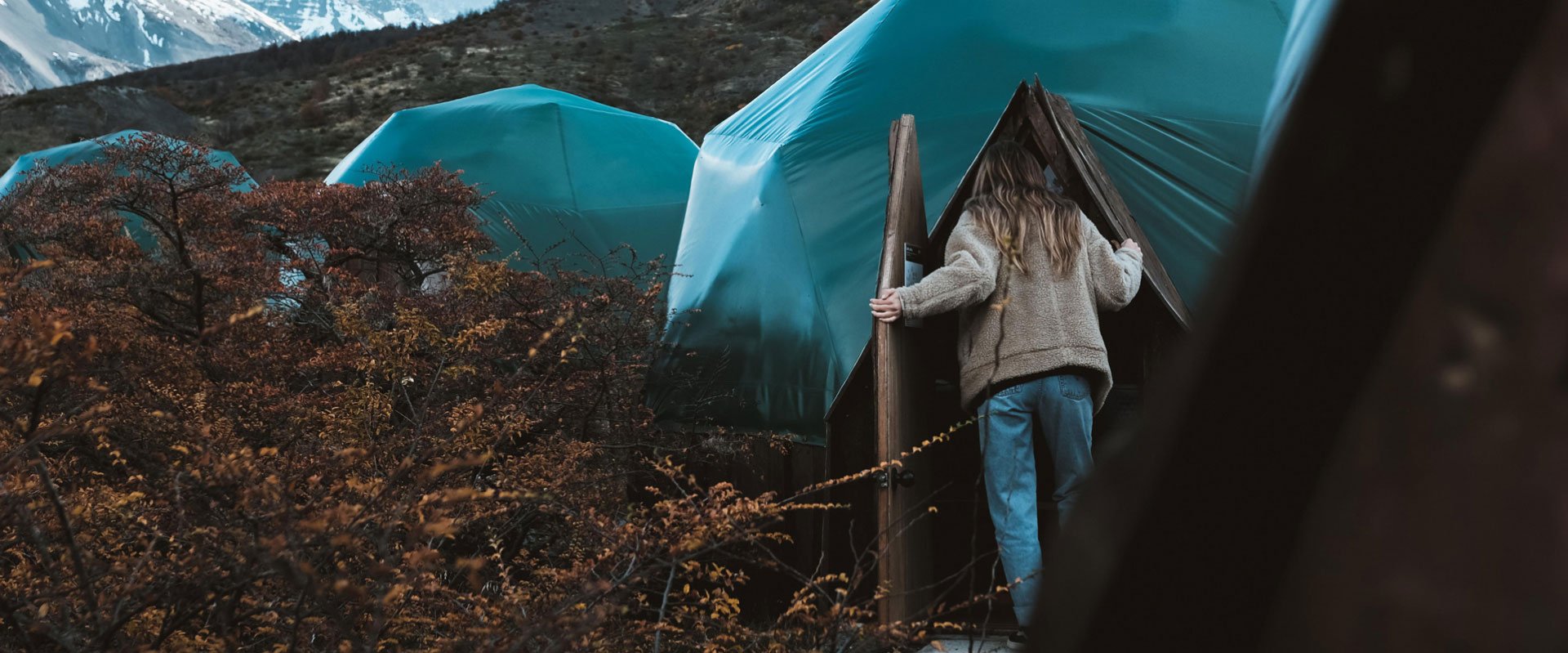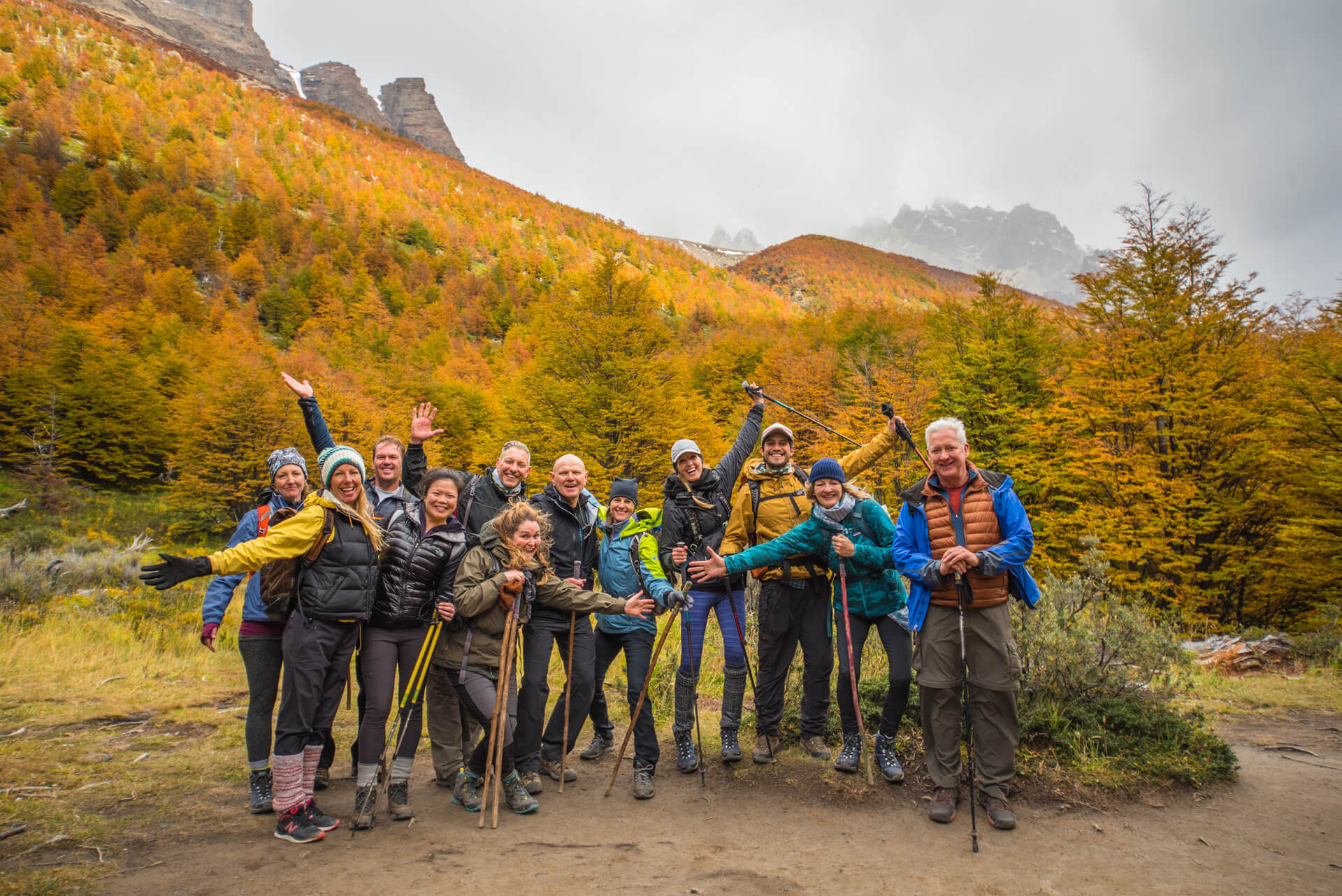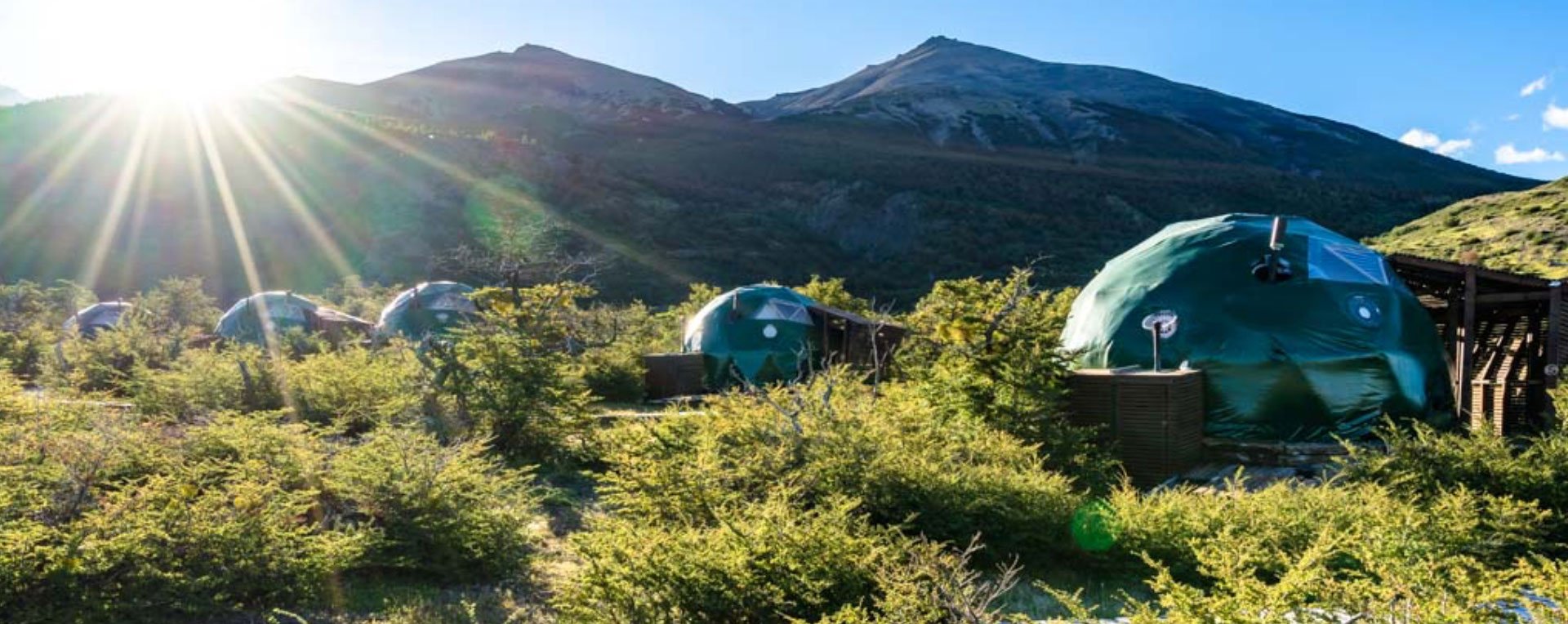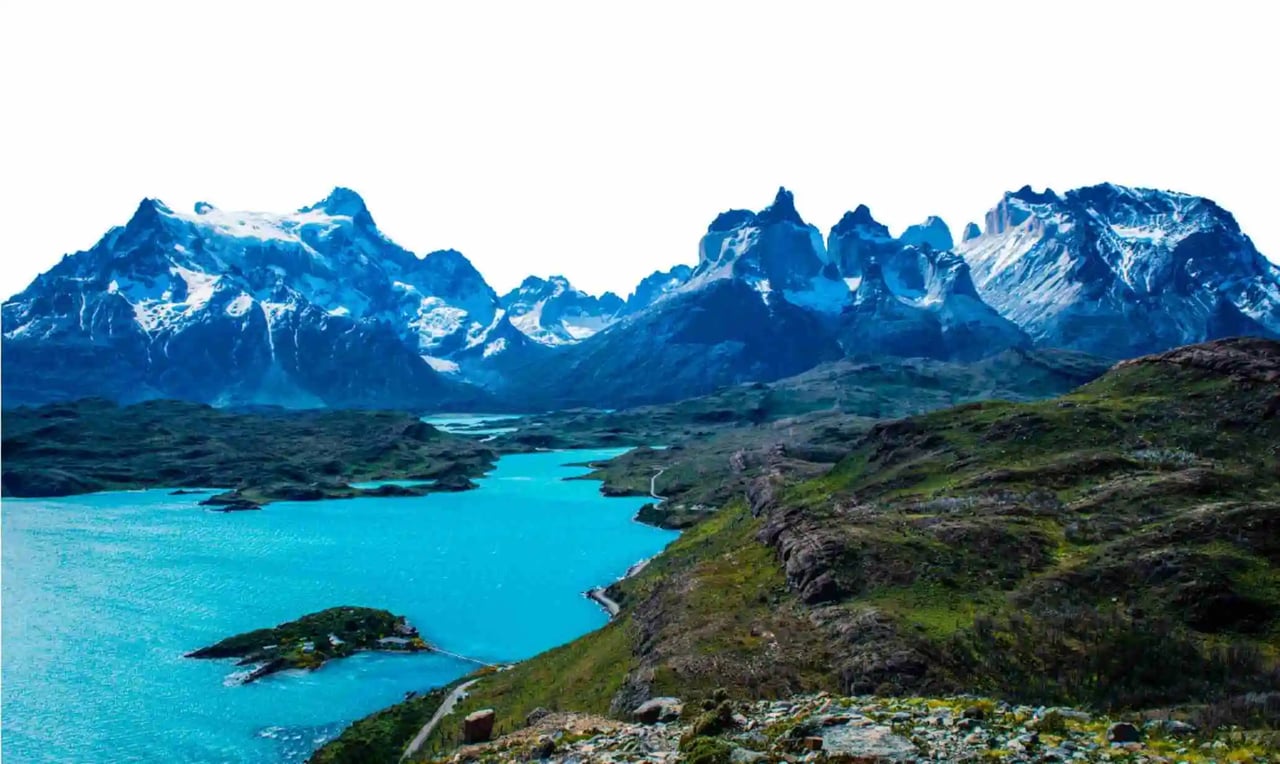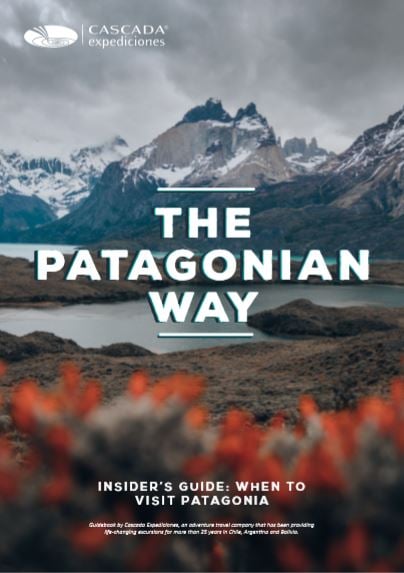When EcoCamp Patagonia was built in 2001, it was the world’s first geodesic hotel. What does that mean? Before that year no other hotel in the world was using domes as accommodation. But nowadays, they are almost everywhere. Many hotels decided to install these spherical structures, and thousands of people are actually living in dome homes.
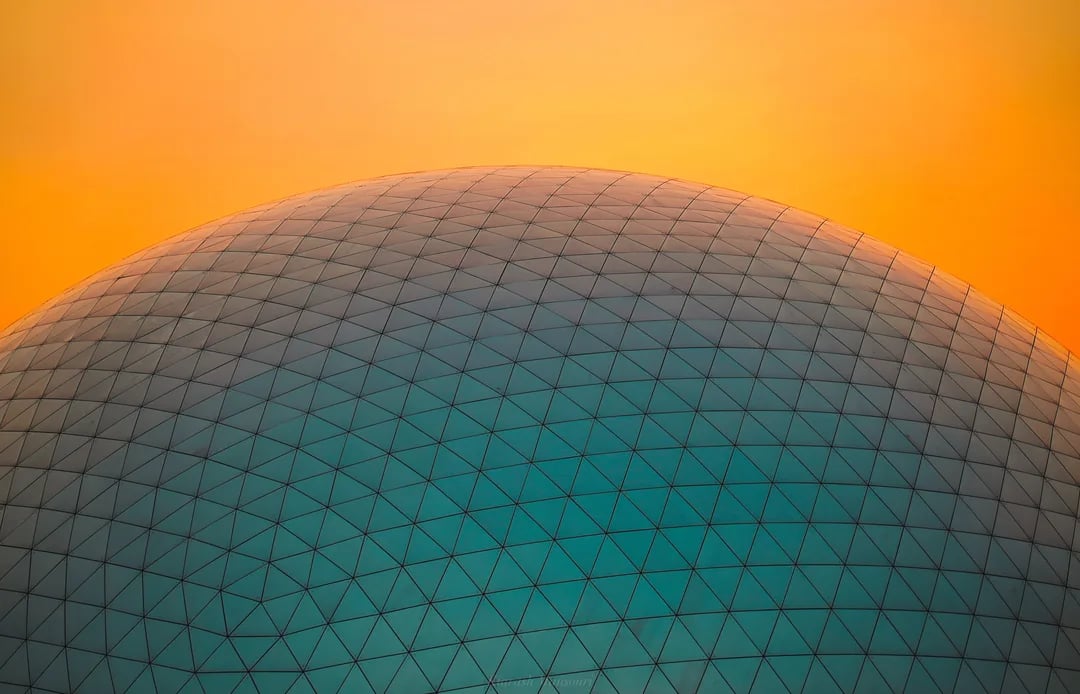
The "cupolas" are an essential part of human history. From the Late Stone Age (between 50,000 and 39,000 years ago), the dome-shaped tomb was used to replicate the god-given shelter, made permanent as a revered home of the dead. Think about the stupas of India and the Tholos tomb of Greece! They were also associated with the Heavens of Ancient Persia and the Hellenistic Roman world, as the circle represents eternity and perfection.
You’ve got it: these structures involve plenty of mysticism. And they are fantastic! Here is a short list that describes why we love them.
1. Connection to the outside world
You’ll notice it immediately if you sleep or meditate: the energy is powerful.
As they are concave from below, they can reflect sounds and create fantastic echoes. In the 15th century, the chants of the clergy were projected in the Byzantine churches thanks to the half-domes. Nowadays, some of the best concert halls on the planet have these shapes, for example, the Royal Albert Hall in London.
And it's not only about music. Sleeping in this structure in Patagonia is the best way to connect with nature. At EcoCamp, you will listen to the wind, the rain, and the birds from your bed. It feels like the environment is talking to you! This is why there is a Yoga Dome: to "Namaste" while enjoying this incredible energy.
2. Energy efficient structures
The spherical shape allows air and energy to circulate without obstruction, which is particularly great in Patagonia (with winds of up to 250 km/h). They are aerodynamic, so that they can withstand earthquakes and hurricanes without a problem (there is even a study about it).

The distribution of weight across the form is the most efficient you can imagine. Stress is equally distributed throughout the structure.
Additionally, they cover the most living area with the least surface area, so you won’t need to occupy too much space, even if you aim to build a large one. Actually, the larger the cupola is, the more efficient it is. If you double the diameter, you will enclose eight times the volume.
With the high volume-to-surface ratio they occupy 30% less surface area than traditional buildings. If you do the math, you’ll realize it takes at least 30% less energy to heat or cool them. Continuous airflow is guaranteed inside the room (there are no stagnant corners), so less energy is required for air circulation and to maintain an even temperature.

Also, depending on the material the structure is made of, they are easy to heat on a sunny day, and you can easily ventilate them with appropriate windows or a simple fan at the top. We do this at EcoCamp, where we use “Fisiterm” (a layer of polyester fibers) for insulation.
Another advantage is that they are great for optimizing natural light. If they have large windows that capture sunlight, you can turn off the light during the day.
3. Less materials than conventional structures
When building a dome, you probably won't need concrete, and you can get creative when choosing a cover (wood, PCV, woodchips, etc.). They require fewer building materials and yet outperform in structural tests.
In addition, these residences are also quick to assemble - way quicker than traditional buildings - and it usually takes just a few people to install them. At EcoCamp, some staff members are trained to build them in just a couple of days!

Needless to say, a dome does not require internal columns or interior load-bearing walls: the geodesic structure supports itself.
Our hemispheres are built on wooden platforms and are connected with wooden walkways to avoid soil erosion. No concrete is used. And it's not just a matter of using less building materials, it is also a matter of reducing the impact on the environment.
4. Flexible structures (so you can get creative!)
Hotel room, yoga, restaurant, bar ... you can do pretty much anything with a dome!

About 50% of the triangles in the lowest row can be removed without weakening the global structure, allowing you to play with the number of doors and windows. Extensions can be built to connect the hemispheres and/or create beautiful entrances.
Walking through EcoCamp, you will see different sizes and various designs. In the Community Domes - four interconnected units that are the social hub of the hotel - you will find a living area, two restaurants and a beautiful bar. There is a “Welcome Dome”, without a doubt the most peculiar front desk you will find in Torres del Paine National Park. There is also a gift shop, a yoga unit, and three different types of accommodation.
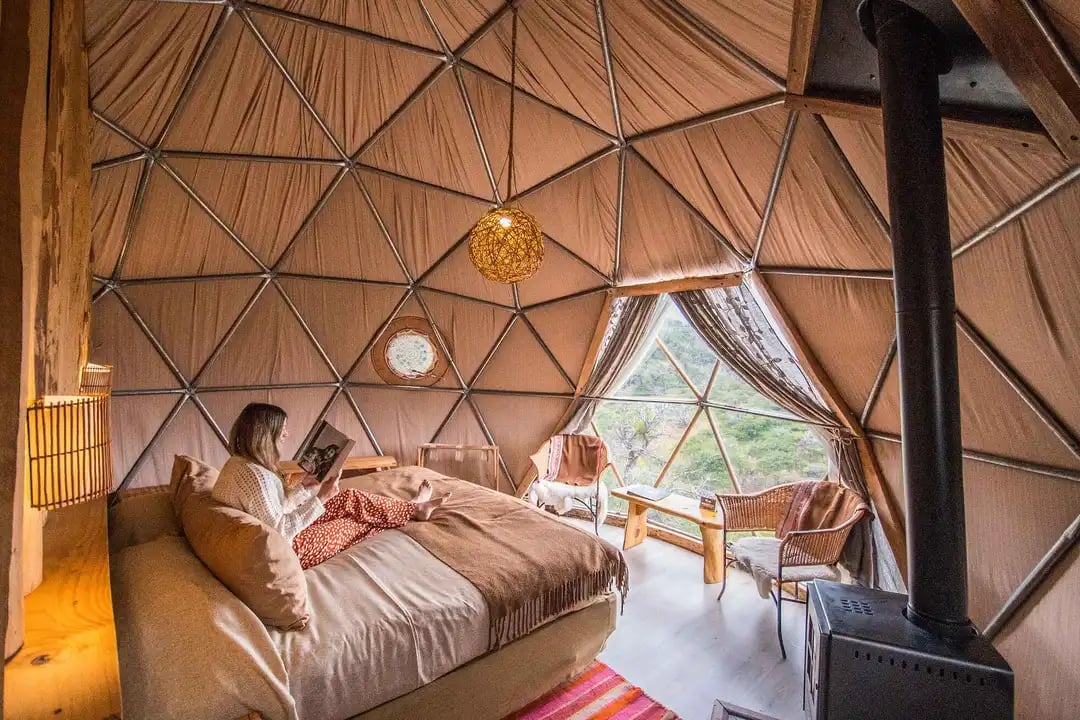
You can choose between the Standard (a simple but beautiful small one with no electricity), the Superior (an intermediate unit with a private bathroom and propane gas heating), the Suite (a spacious, comfortable room with a private bathroom and pellet heating) and the Suite Loft (a 2-floor unit that’s the best fit for families).
Domes can also be useful outside of a hotel context. For example, in a dome in the middle of the desert in northern Chile, residents of the Tarapacá region can learn more about the research being conducted there on fog water. There is an exhibition, a scale model of a fog catcher, and educational equipment.
Many astronomy observatories also have the same hemispherical shape. This is partly because this structure protects telescopes from wind and uneven airflow, which could affect observations.
5. A fascinating history
The history of these structures is worth writing a book. The rigid triangular elements define this hemispherical thin-shell structure designed after World War I by Walter Bauersfeld, a German engineer. At that time, Walter worked as Chief Engineer at Carl Zeiss Optical Company. He wanted to house a planetarium projector in a new kind of planetarium: this was when the first geodesic dome was patented.

Right after World War II (1948), American architect Buckminster Fuller coined the term “geodesic” from field experiments at Black Mountain College, in North Carolina. While Fuller is not the original inventor, he is credited with the popularization of these units in the U.S. where he received a patent in 1954. They were quickly adopted for specialized uses, such as radar stations in Canada, storage facilities, weather observatories, and auditoriums. In the 1950s, the U.S. Marines even experimented with helicopter-deliverable geodesic dome structures.
In 1964 they were introduced to a wider audience as a pavilion for the World's Fair in New York City. In 1975, the spherical structure was even built at the South Pole! Some other world-famous examples were built in the 1980s, such as Spaceship Earth in Walt Disney World Resort (Florida) and Science World in Vancouver, Canada.
Today there are many hotels in this form in Chile, from very basic models to glamping domes and luxurious ones. But in 2001, Yerko Ivelic, Nani Astorga, and Javier Lopez were the first to create a geodesic hotel in Torres del Paine National Park. The shape was designed to resist Patagonia’s strong winds and as a tribute to the indigenous Kawesqar people, who used them to move from one place to another.
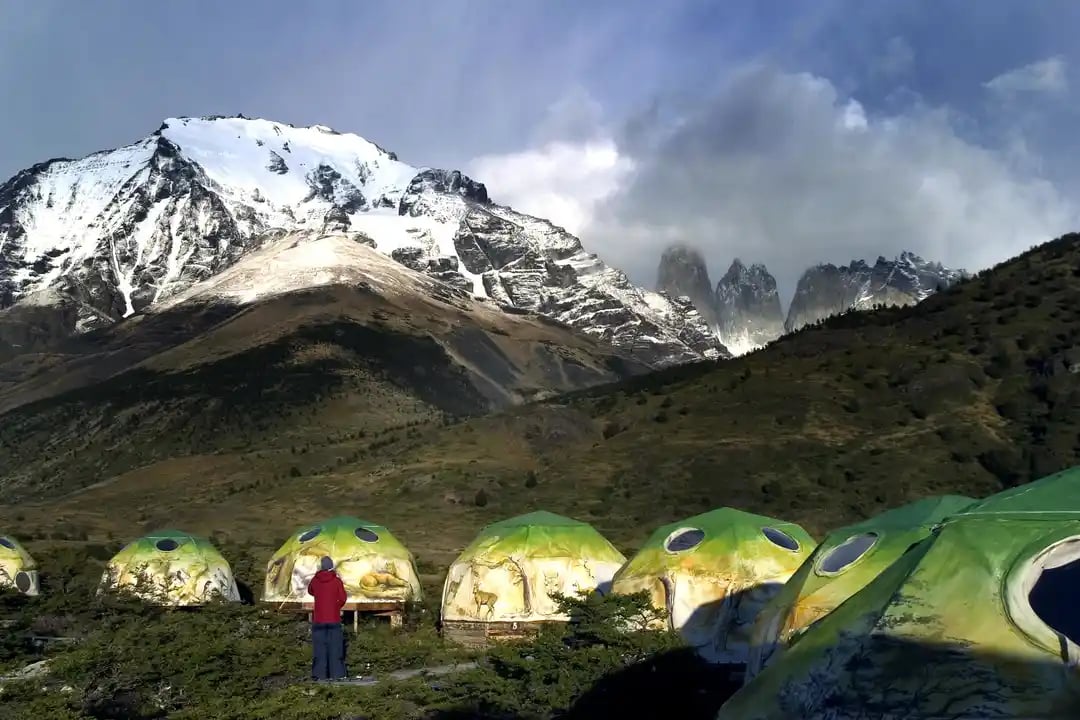
The picture above shows the first domes built at EcoCamp in the early 2000s. Today, they all have a green cover.
The geodesic structures at EcoCamp were designed to avoid impacting the environment so they could be removed without leaving a footprint. It happened in the mid-2000s when EcoCamp changed its initial location to a new one (its current location). Also, there is a whole concept of sustainability, using renewable energy, composting toilets, and working with the local community which made EcoCamp an example globally.
Check out this video to learn more about our sustainability initiatives.
Would you like to experience this accommodation yourself? Discover EcoCamp Patagonia's adventures, or contact us to book your Patagonia trip now!

